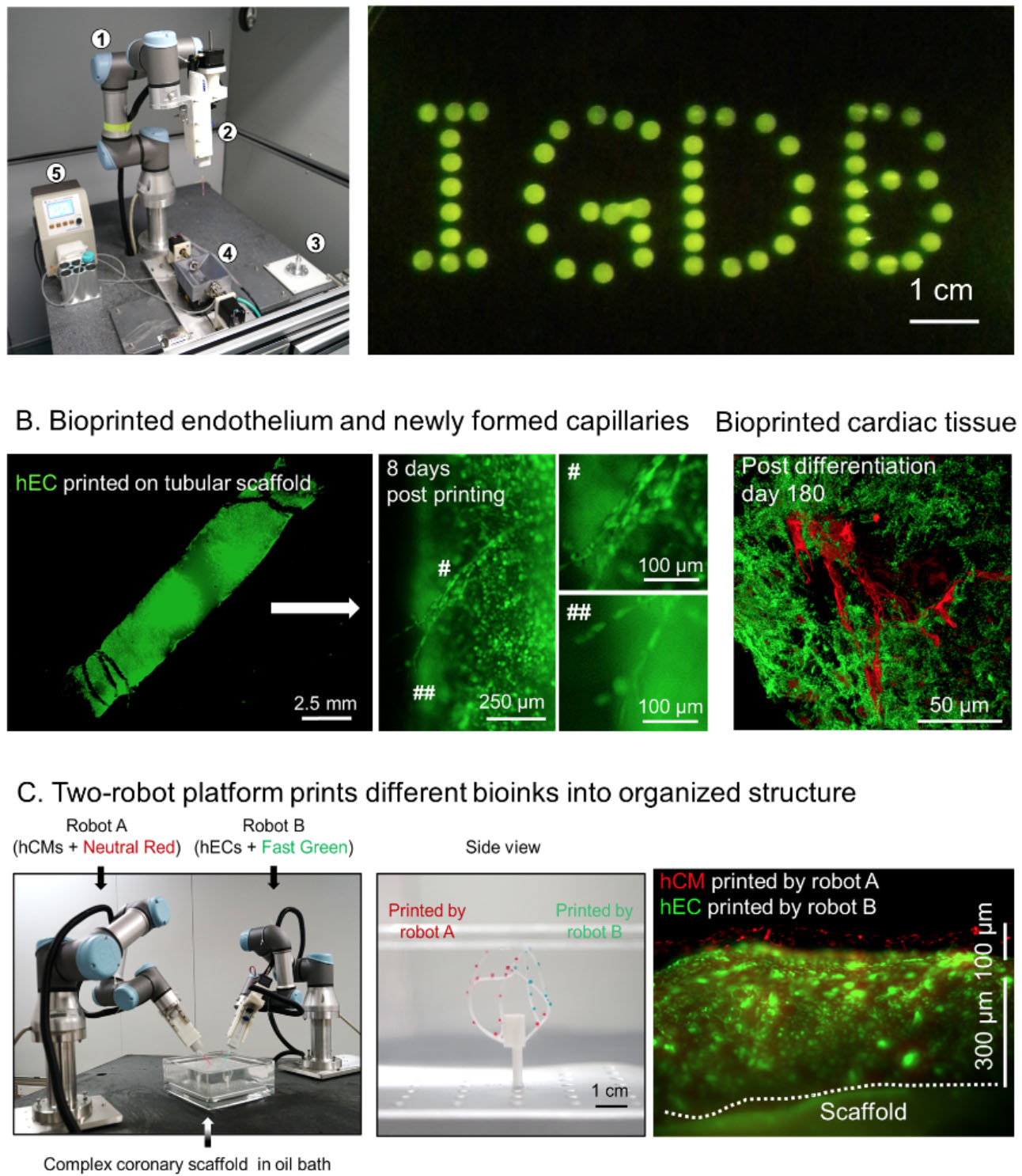| Feb 22, 2022 |
Novel 3D Bioprinting platform breaks through limitations of conventional bioprinting techniques
|
|
(Nanowerk News) A joint research team led by Prof. WANG Xiujie at the Institute of Genetics and Developmental Biology of the Chinese Academy of Sciences, Prof. WANG C.L. Charlie at The University of Manchester and Prof. LIU Yongjin at the TsingHua University, has recently reported a novel three-dimensional (3D) bioprinting platform.
|
|
3D bioprinting, which combines a 3D printer with bioinks (often containing cells and biomaterials) to fabricate tissue/organ-mimicking structures, is one of the most promising technologies for in vitro human organ generation. However, the commonly used 3D bioprinting approach is unable to incorporate blood vessel networks during the bioprinting process, therefore facing difficulties in fabricating functional and long-lived complex organs due to the lack of nutrient supply to printed cells.
|
|
In addition, current bioprinting technologies rely on immobilizing printed cells by adding artificial biomaterials to the bioinks, which inhibit functional cell contact and the formation of new blood vessels, thereby interfering the biological function and long-term survival of bioprinting products.
|
 |
| Novel six-axis robot-based bioprinting system and its printing products. A. Six-axis robot bioprinting platform and the printed IGDB letters composed of eGFP-labeled endothelial cells; B. Bioprinted artificial blood vessel is capable of forming new capillaries (left and middle, green color is eGFP-labeled endothelial cells). Bioprinted vascularized cardiac tissue (right, green color is cardiac tissue and red color is vascular network); C. Two-robot cooperation platform (left) can simultaneously print different types of cells onto complex-shaped vascular scaffold (middle) to form patterned cell organization (right). (Image: IGDB)
|
|
In this study (Bioactive Materials, "A multi-axis robot-based bioprinting system supporting natural cell function preservation and cardiac tissue fabrication"), the researchers creatively converted a six-axis robotic arm into a 3D bio-printer, enabling cell printing from all directions.
|
|
To avoid the detrimental effects of biomaterial solidification, they also designed an oil-bath based cell printing system that allows the printed cells to blood vessel scaffolds via hydrophobicity, thus better maintaining cell activity and promoting the formation of cell-to-cell contact.
|
|
Combining the six-axis robot-based bioprinter and oil-bath-based cell printing system, the researchers achieved a full range of cell printing on a complex-shaped blood vessel scaffold without causing cell damage or compromising cell proliferation and function.
|
|
Furthermore, inspired by the natural organ developmental process, the team designed a repeated print-and-culture bioprinting strategy: after printing mono- or multi-layers of cells on the blood vessel scaffold, the printed cells would be cultured for certain intervals to induce the formation of cell-cell contact and new blood vessels, then the scaffold and already printed cells were subjected to a new round of bioprinting.
|
|
In theory, repeating such print-and-culture cycle could generate complex tissue/organs with printed cells interlaced and connected with blood vessel networks to maintain long-term survival and functions.
|
|
To demonstrate the feasibility of such strategy, the researchers carried out bioprinting experiments using endothelial cell bioink and cardiomyocyte bioink on blood vessel scaffolds, and found that the printed endothelial cells formed intact endothelium as well as new blood vessels and capillaries with the assistance of angiogenic factors. On the other hand, the printed cardiomyocytes formed gap junctions and resumed rhythmic contraction shortly after printing.
|
|
By printing the mixture of endothelial cells and cardiomyocytes, researchers generated a piece of vascularized cardiac tissue, which maintained rhythmic beating and alive for at least 6 months. Taking advantage of the extendibility of the six-axis robots, they further established a two-robot cooperation platform and accomplished simultaneous bioprinting of multiple types of cells on complex-shaped blood vessel scaffolds.
|
|
In summary, compared with conventional methods, the novel 3D bioprinting system reported in this study offers a new strategy to print cells on complex-shaped vascular scaffolds and facilitate angiogenesis among post-printed cells, therefore enables long-term cell survival and demonstrates a feasible way to generate large-scale and functional artificial tissues/organs in vitro.
|

